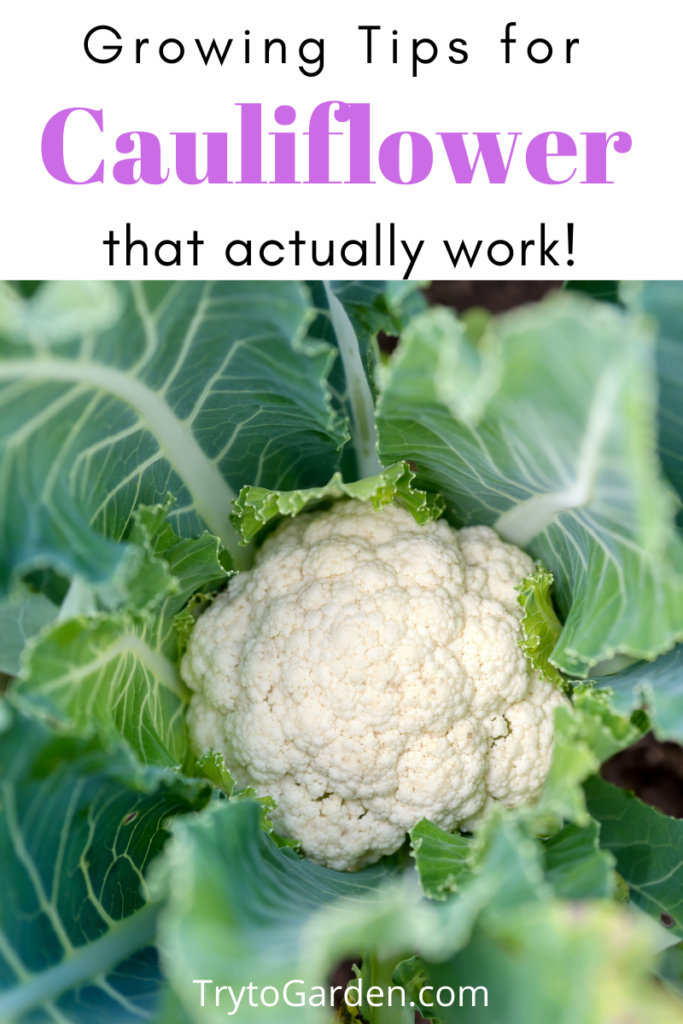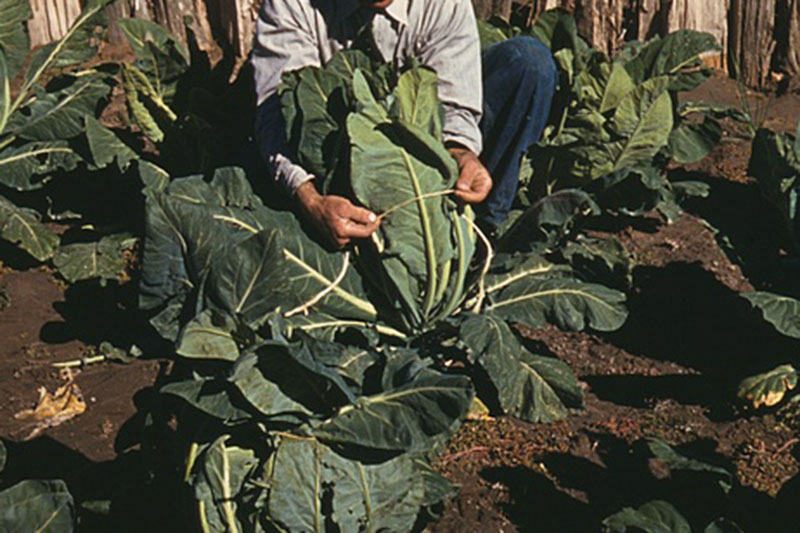This post contains affiliate links, which means I will make a commission at no extra cost to you should you click through and make a purchase. As an Amazon Associate I earn from qualifying purchases.
Cauliflower is a staple on many tables and in home gardens. This is true because it is not only tasty but, like all of the Brassica vegetables –cabbages, collards, broccoli, and the like – it is packed with vitamins, nutrients, antioxidants, and anticarcinogens.

Add in the fact that it is all the rave to rice right now and use as a nutritious alternative to actual rice? This is certainly an item you want to look at adding to your garden.
Gardening Tips for Cauliflower That Actually Work!
While cauliflower rice is incredibly healthy when compared to regular rice, it doesn't taste the same. I has a mild flavor with nutty, slightly bitter undertones.
Still, it is a powerhouse nutritionally and a great tool in the low-carb diet arsenal.
Basic Cauliflower Facts:
Seed germination usually takes 8 to 10 days.
Most varieties need to be planted in the spring so they are ready to harvest before the hot summer days although there are some that are suited for mid-summer planting for a fall harvest.
It grows best during sunny days with air temperatures of 70 F.
You need to plant one for every head you want to harvest as it only produces a single head per plant.
It can be eaten raw or cooked, either way is delicious.
Cauliflower should be planted earlier, about three weeks and more before the last spring frost because if it is left to grow in the heat, it will have a bitter taste. This gem belongs to the cabbage family, just like turnips, broccoli, etc.
Here are easy steps on growing cauliflower:
The seeds of the cauliflower should be planted indoors about eight weeks before the last spring frost. Just like any other vegetables that belong to the cabbage family, they cannot endure extreme heat. Therefore, the seedlings should be transplanted in the garden about three weeks before the last spring frost. As expected, seedlings are about six inches tall now.
Next, pull off the leaves at the bottom and plant the cauliflower plants about eighteen inches apart in the garden. Remember that the roots should be covered with dirt until it is impossible for you to touch the leaves at the bottom of the plant. Build a ring or a circle in the soil around the plants, for it will help the cauliflower to be moist.
Whenever the heads reach three to five inches across, it is time to do the blanching. This will protect and cover the heads from sunlight exposure to keep their true sweetness. Blanching will also cover the cauliflower heads from the rain and thus keeping them from rotting. In doing blanching, tie the leaves up around the head.

Be sure not to tighten up the leaves too much around the heads. Doing this will stop the heads from growing. An alternative way is to take the outside leaves of the cauliflower and place them over the top and push them totally around the head. These two methods will help to mobilize the air around the head. Blanching may take five to eight days.
You may also plant cauliflower as a fall crop. The cauliflower seeds should be inseminated instantly and directly into the ground. You do not have to start indoors. Place the seeds in groups of three or four. These groups should be two to three feet apart. Blanching in fall crops may take several days and may take a lot of work.
To harvest your produce, it will all base on the variety you planted. You can harvest them whenever the heads are about six to twelve inches across. You must reap your cauliflower before the buds sprout. If you allow the flower buds to open, they will loosen up and thus making your cauliflower acquire a bitter taste. Cut it at the bottom of the head to harvest.
Cauliflower Easy Recipe
You can't get much easier than sheet pan cooking - where you season the food, pop it on a sheet pan, and then toss it into the oven! Sheet Pan Butternut Squash and Cauliflower is a great example of that. Cheesy Scalloped Cauliflower from My Life Cookbook is another great gem to look at when wondering how to cook cauliflower.
Easy Cauliflower Soup from LaaLoosh can't be beat and neither can Crockpot Cauliflower Soup from Real The Kitchen & Beyond. I don't know which soup I like better!
This recipe is pretty awesome too:
